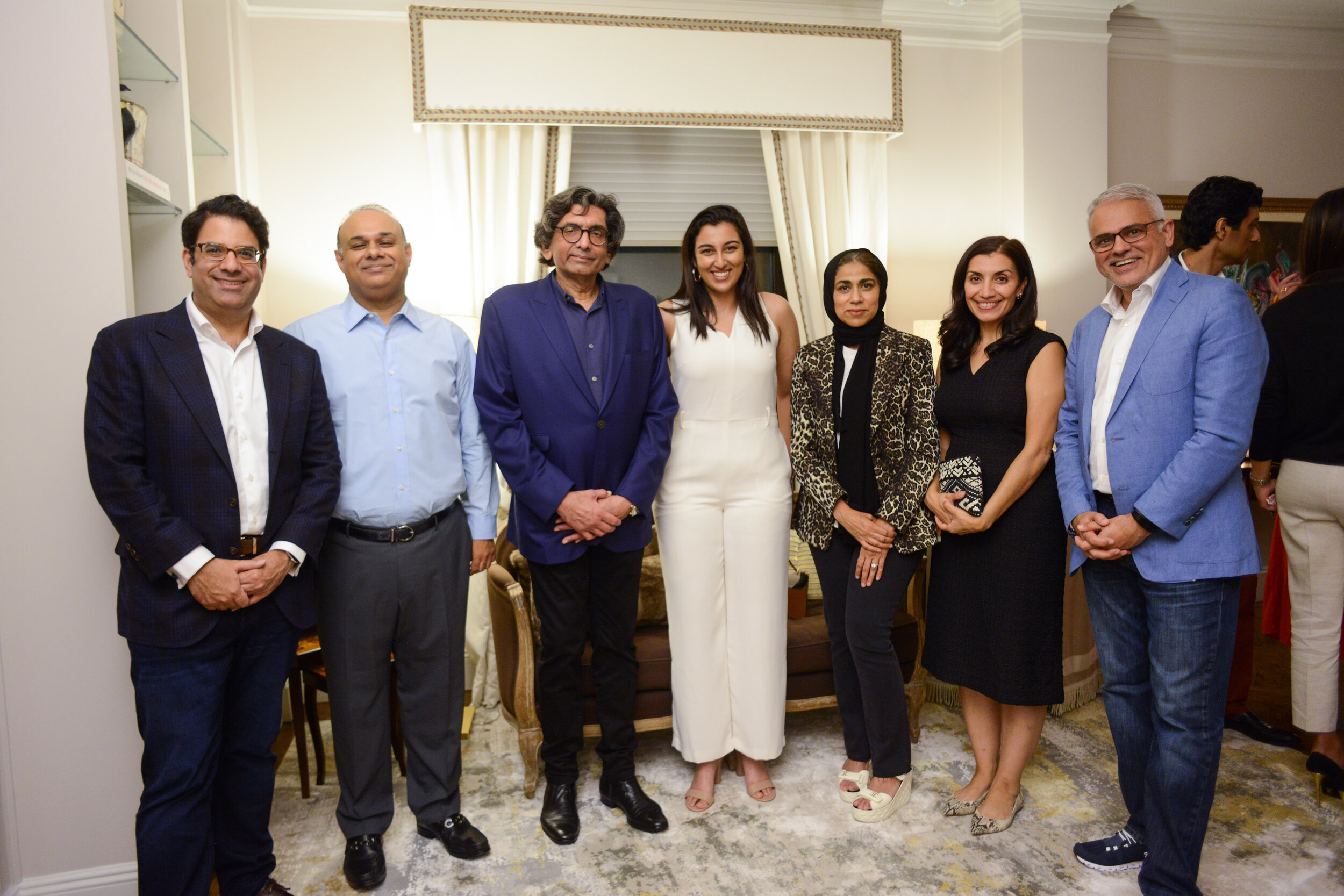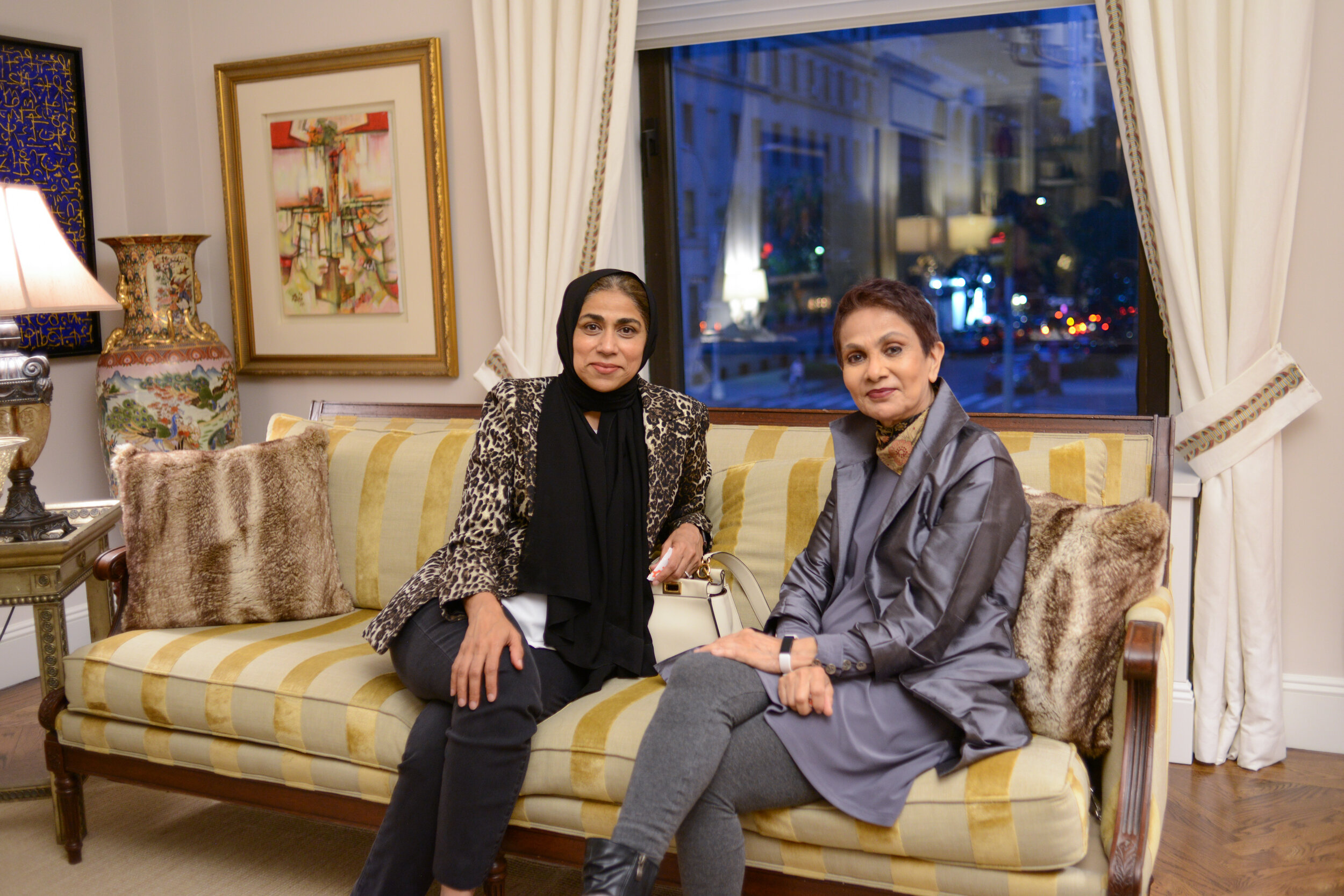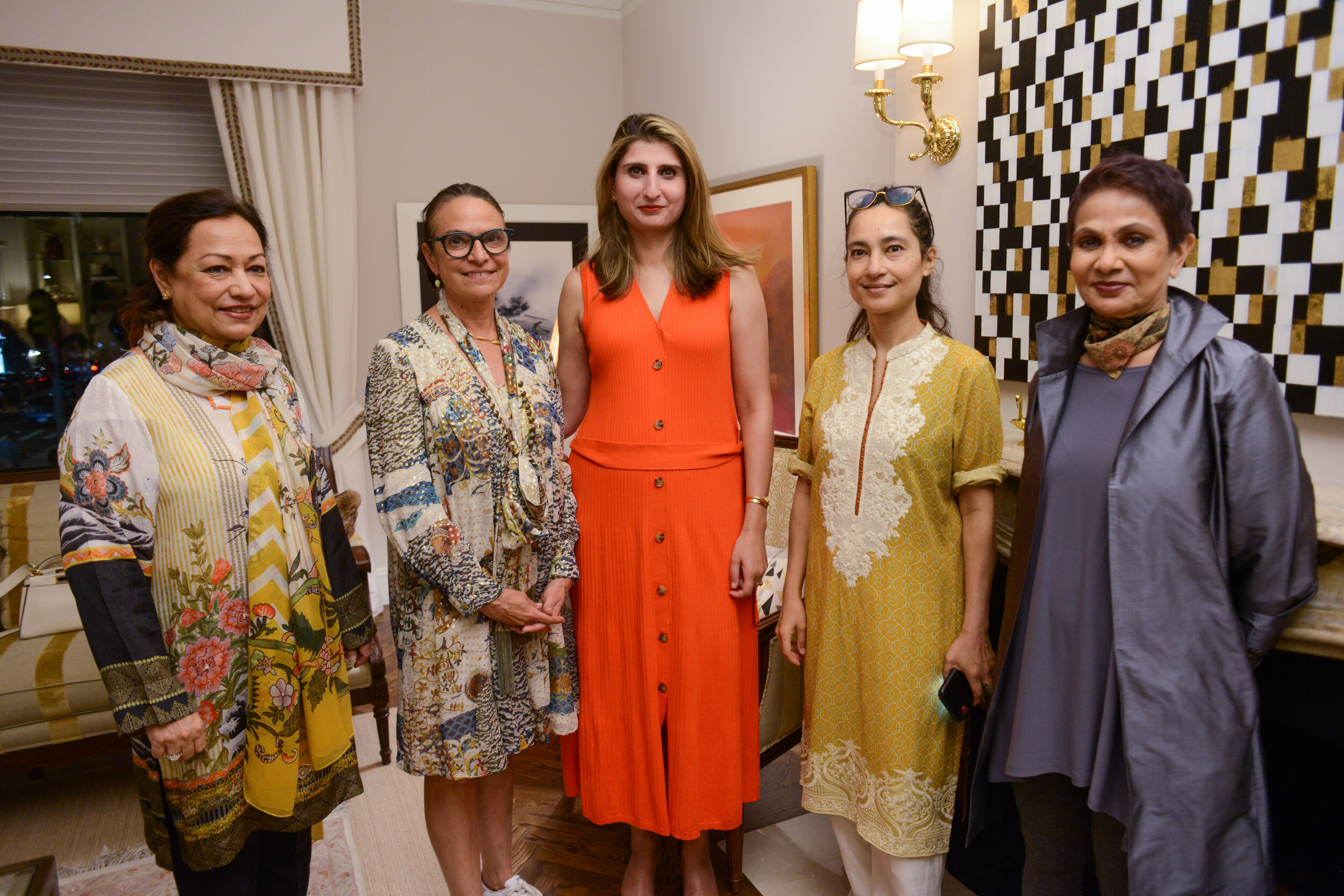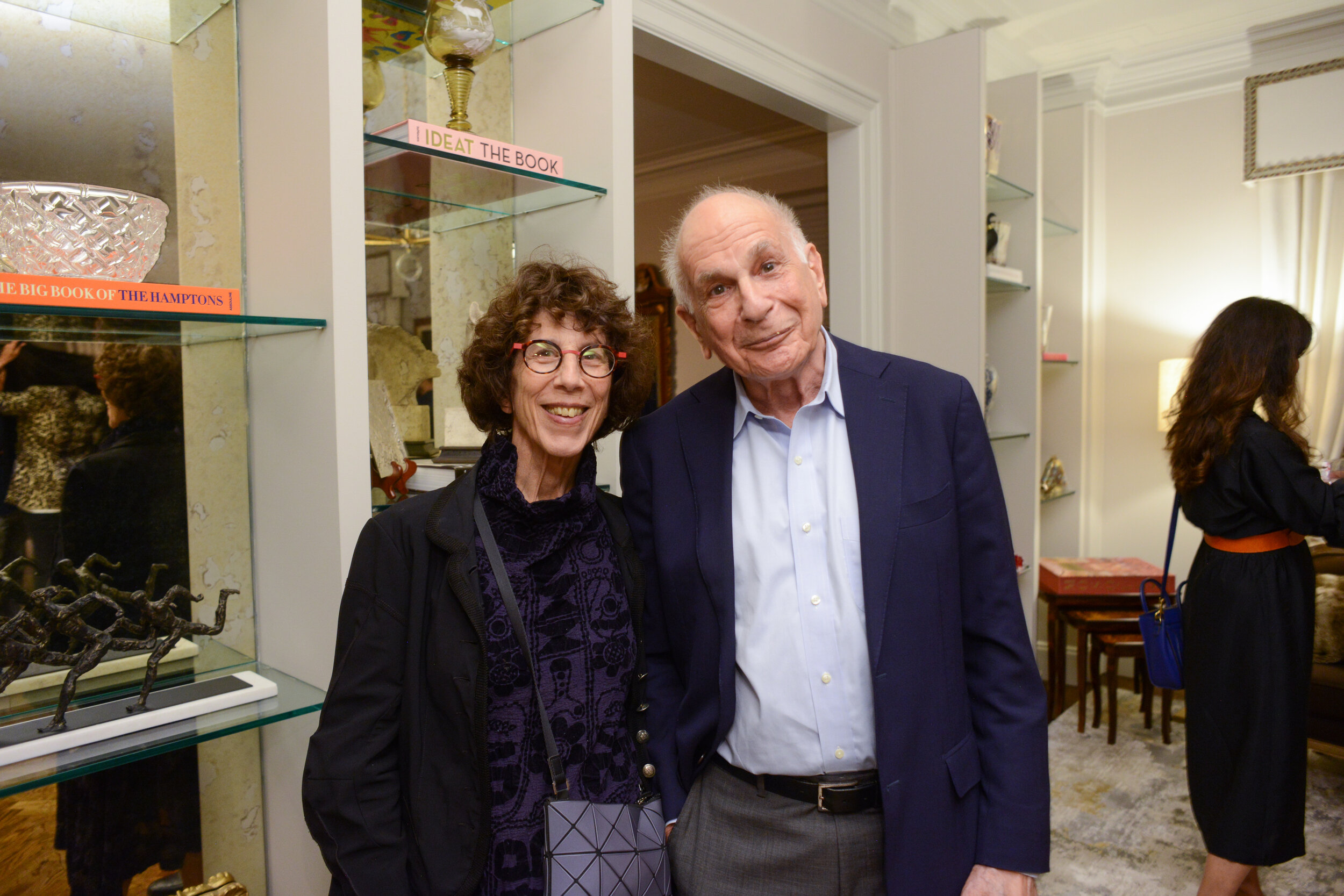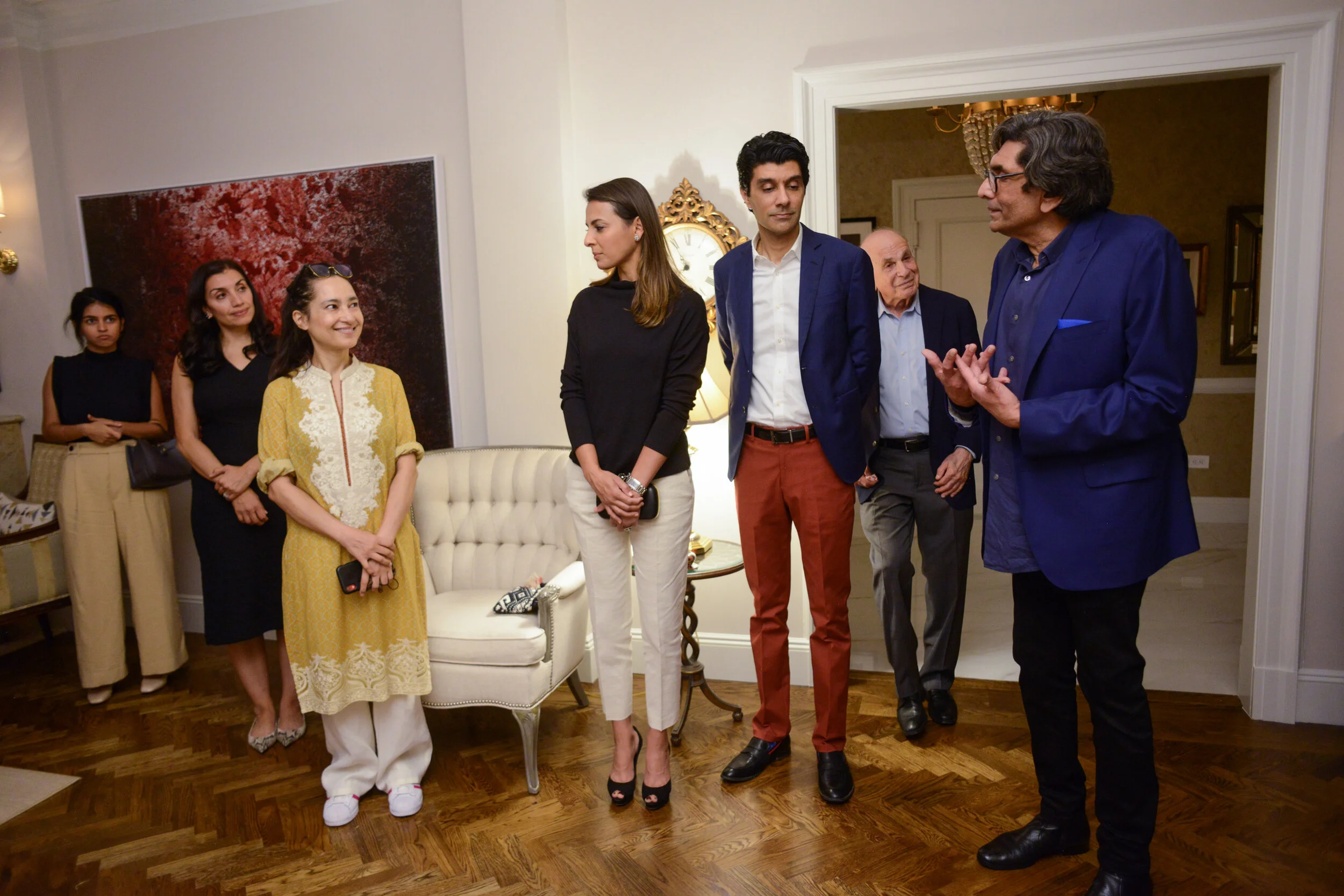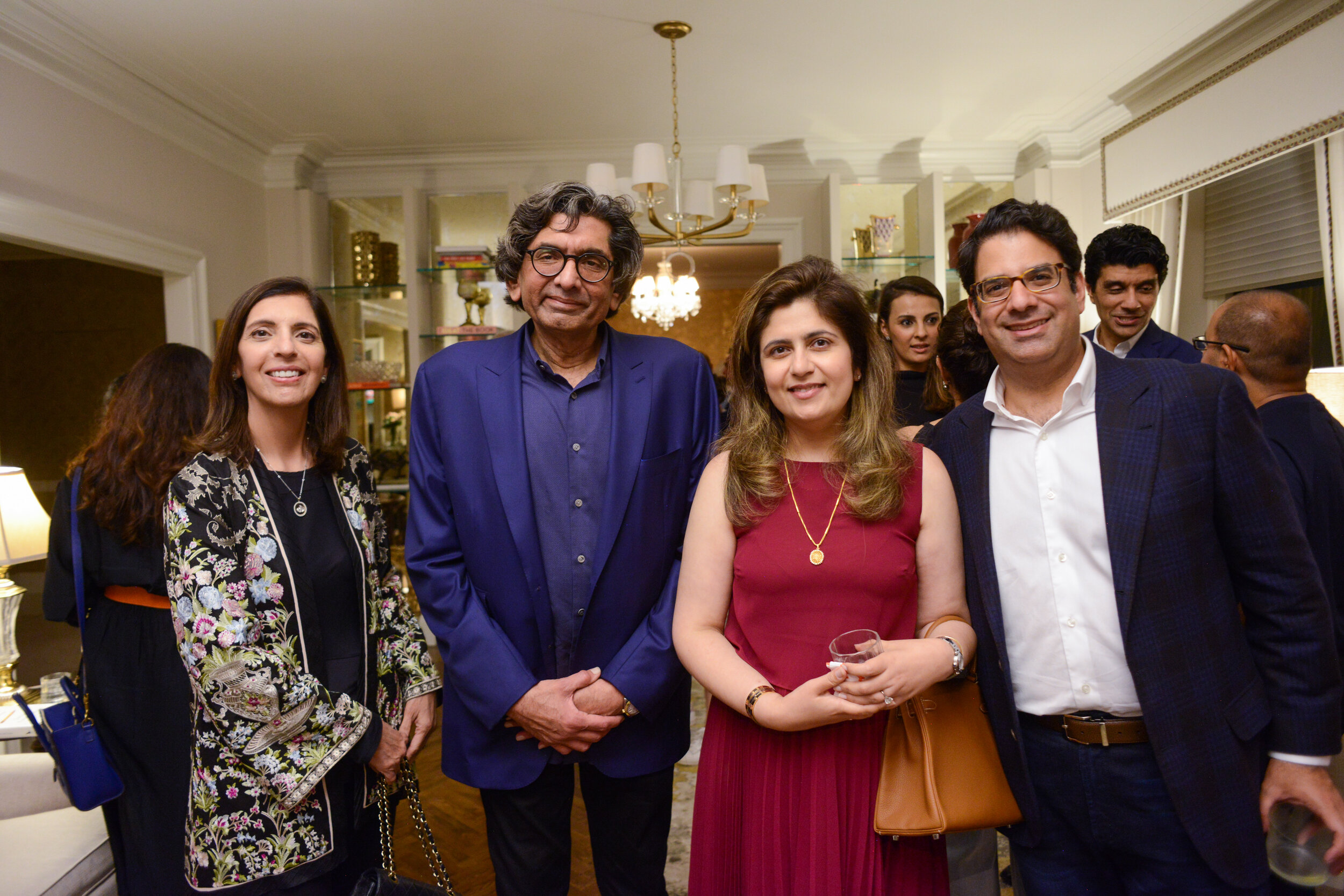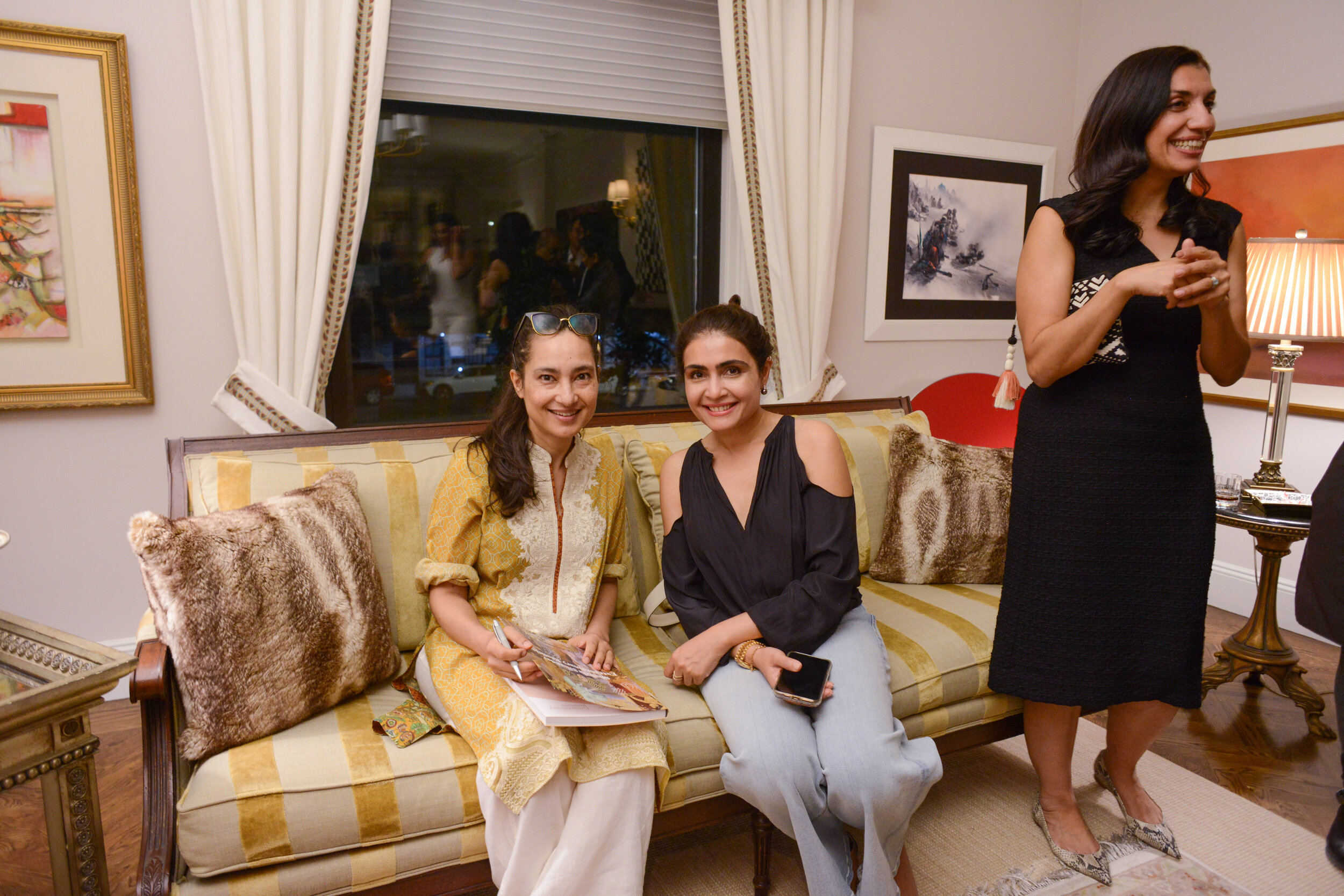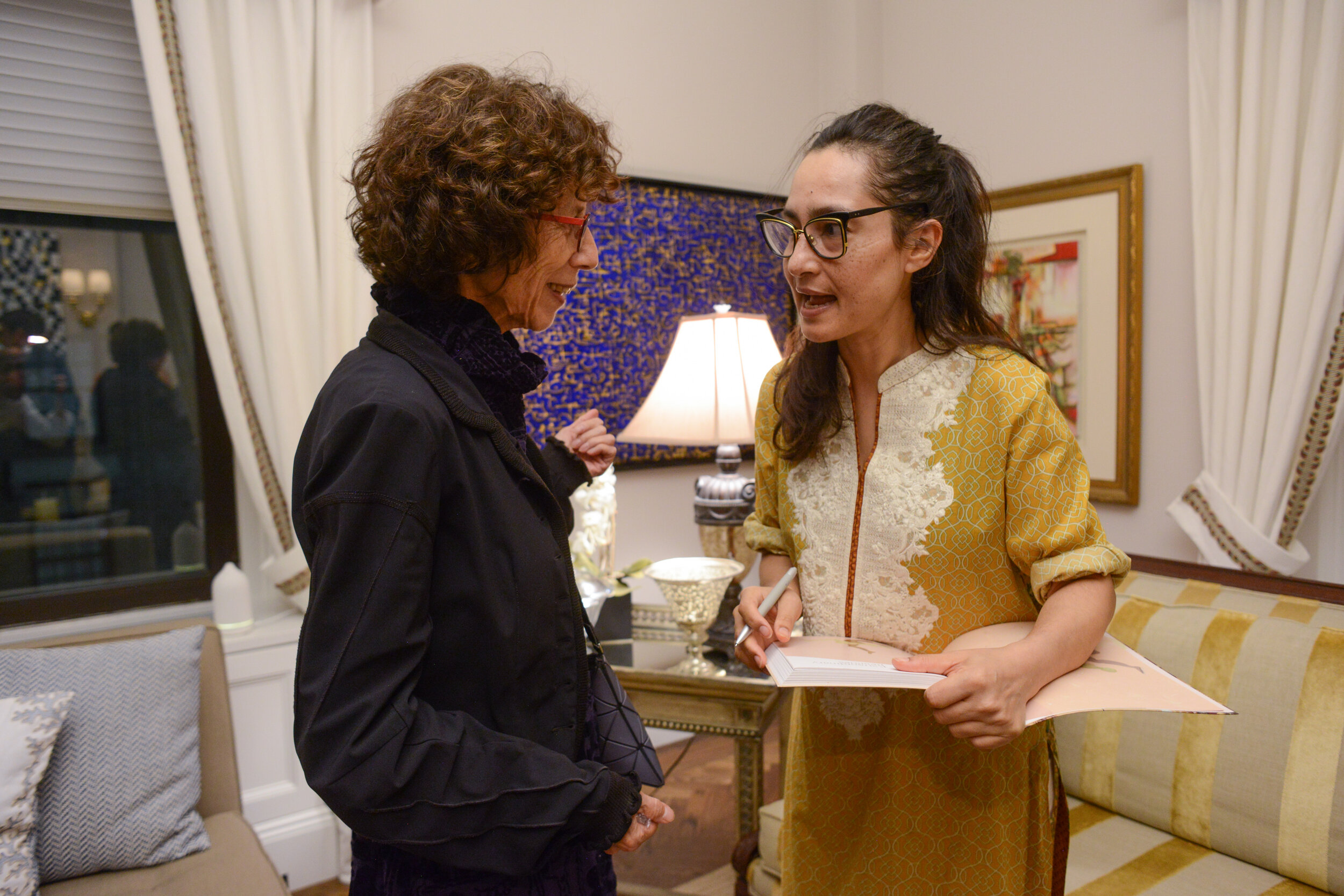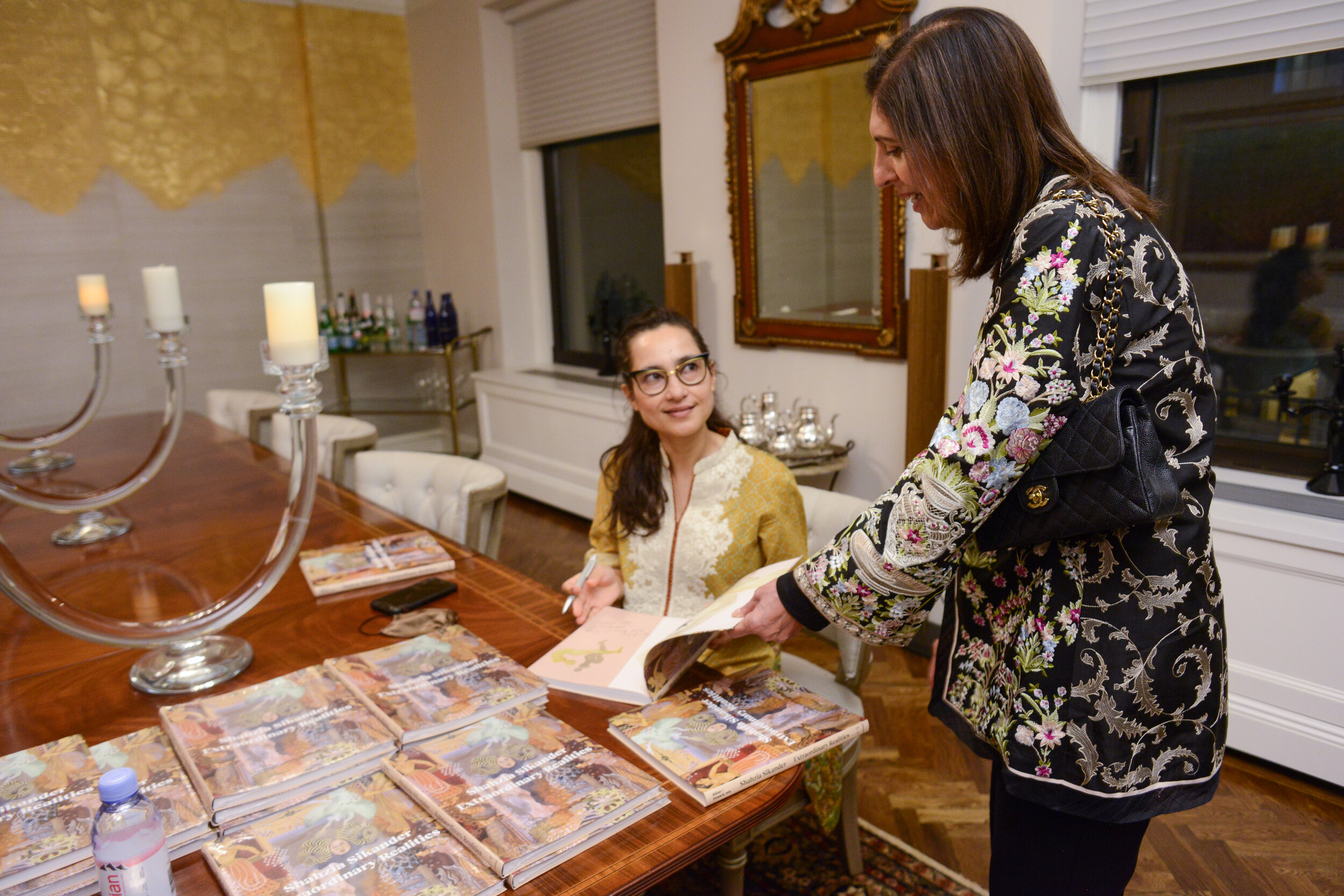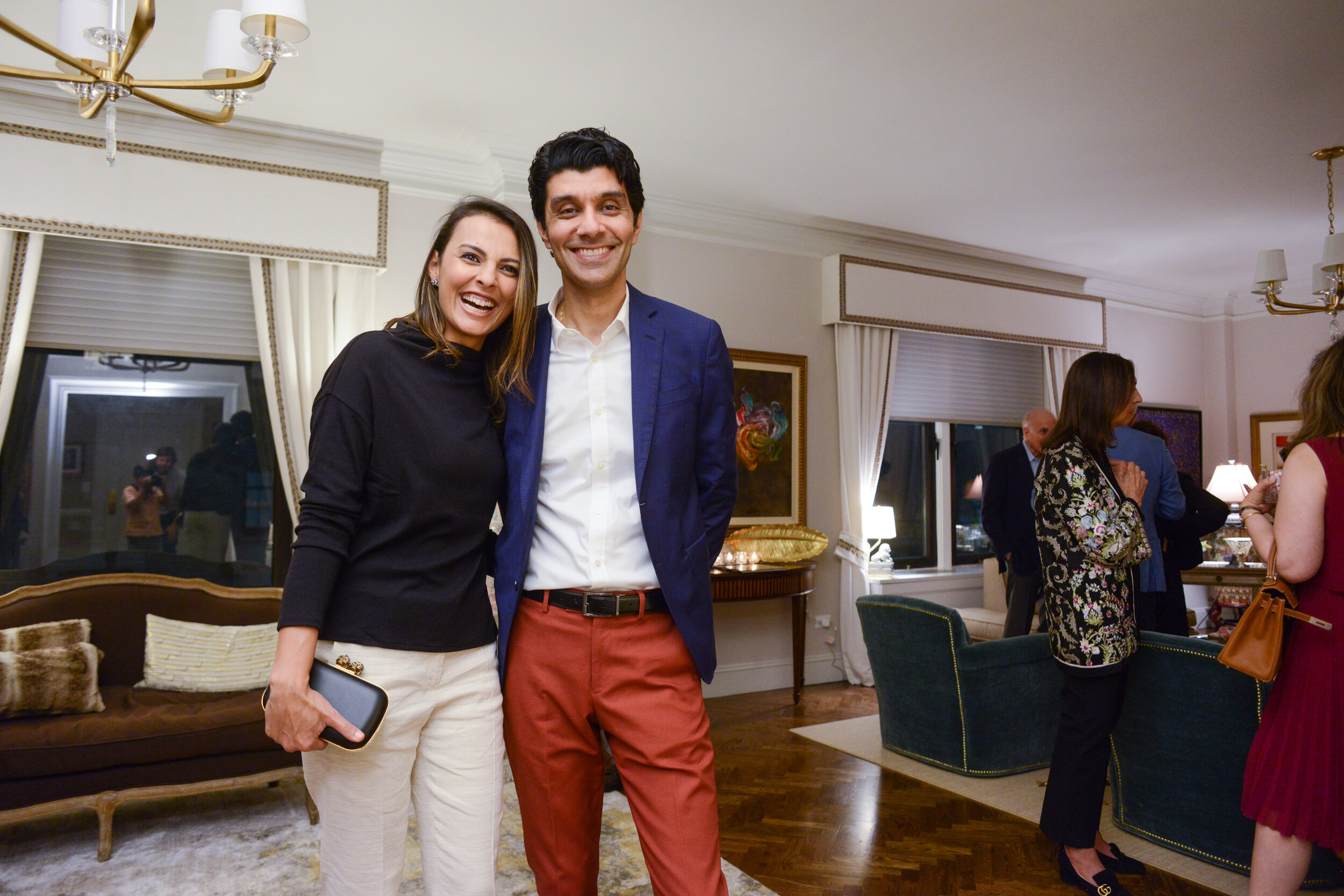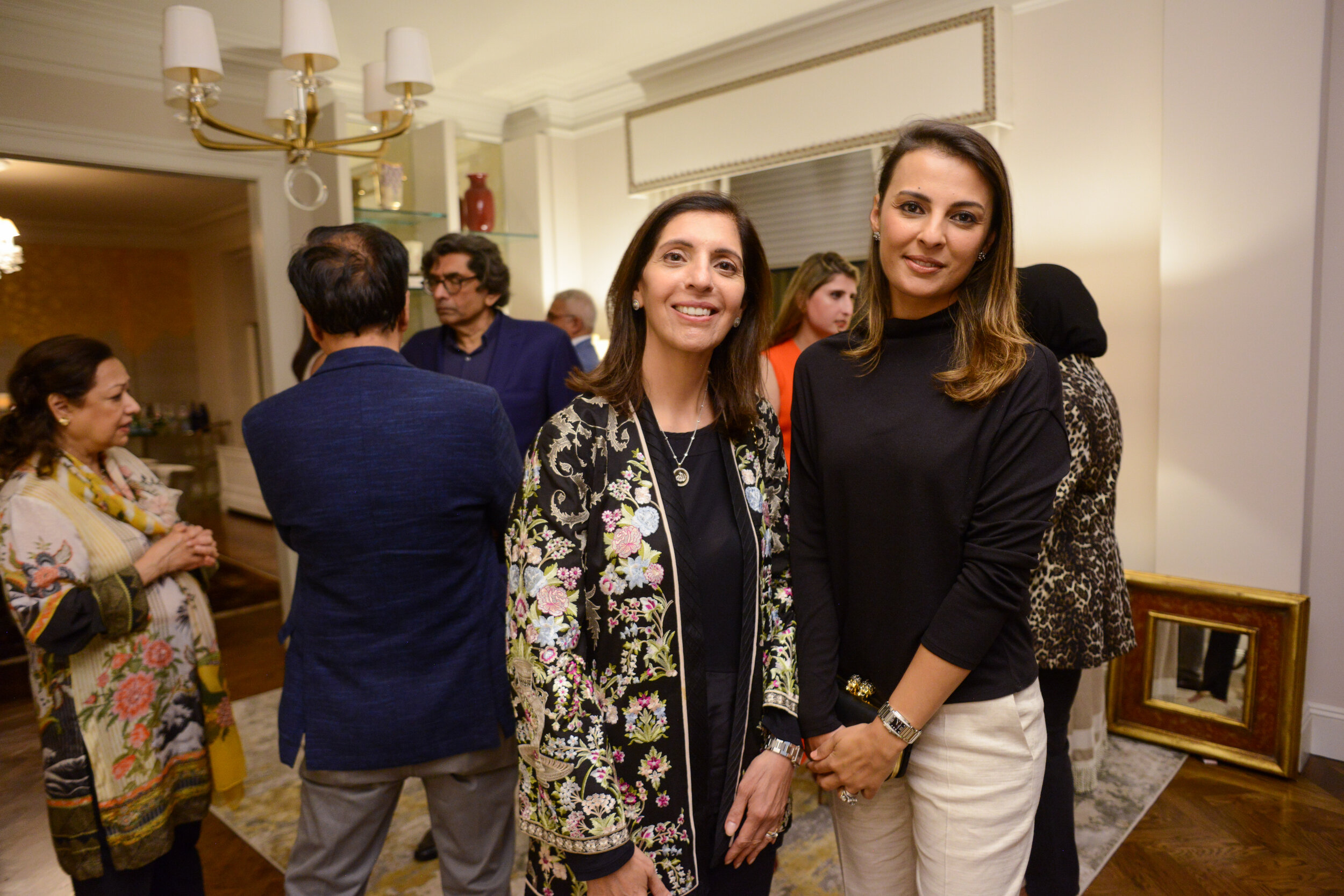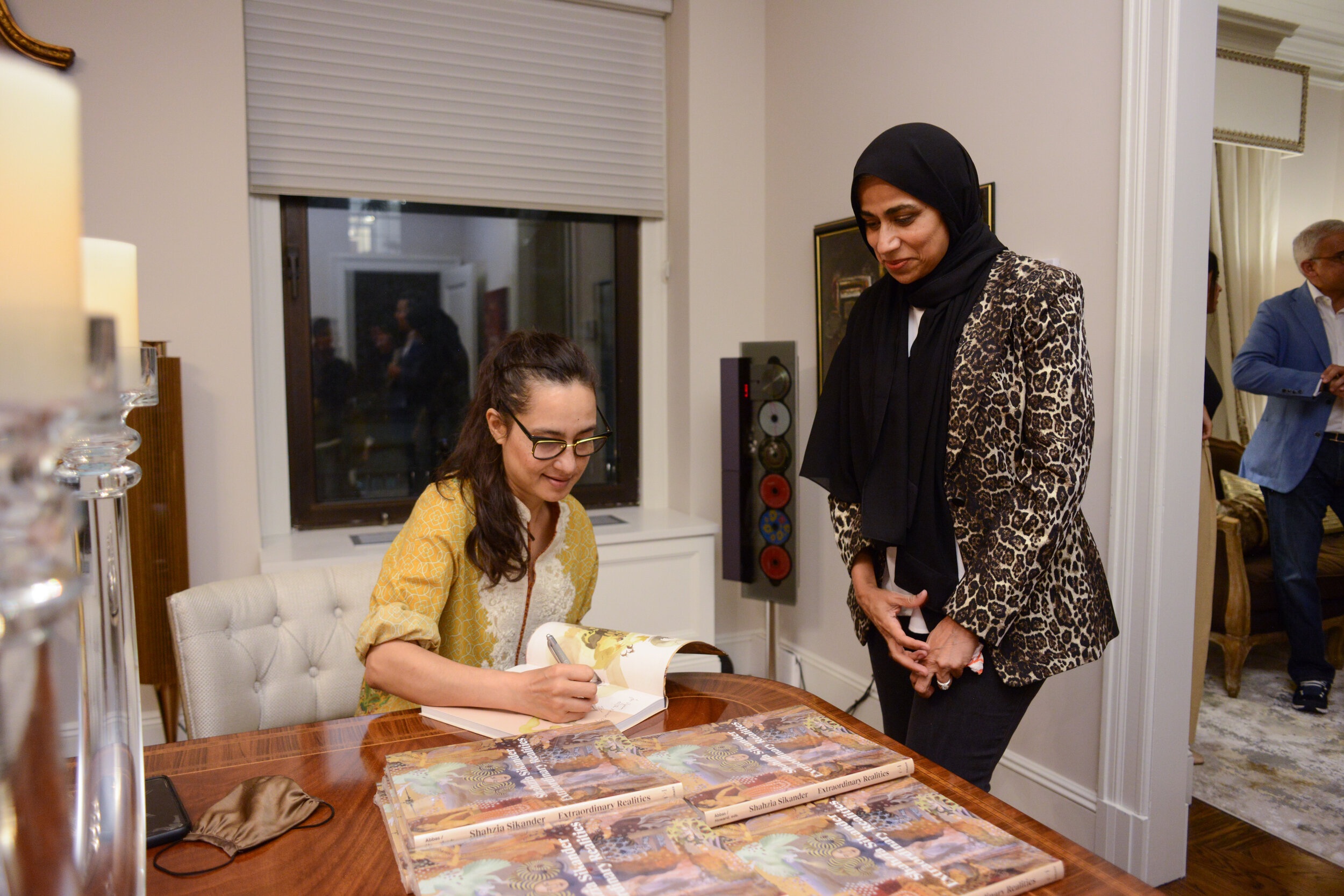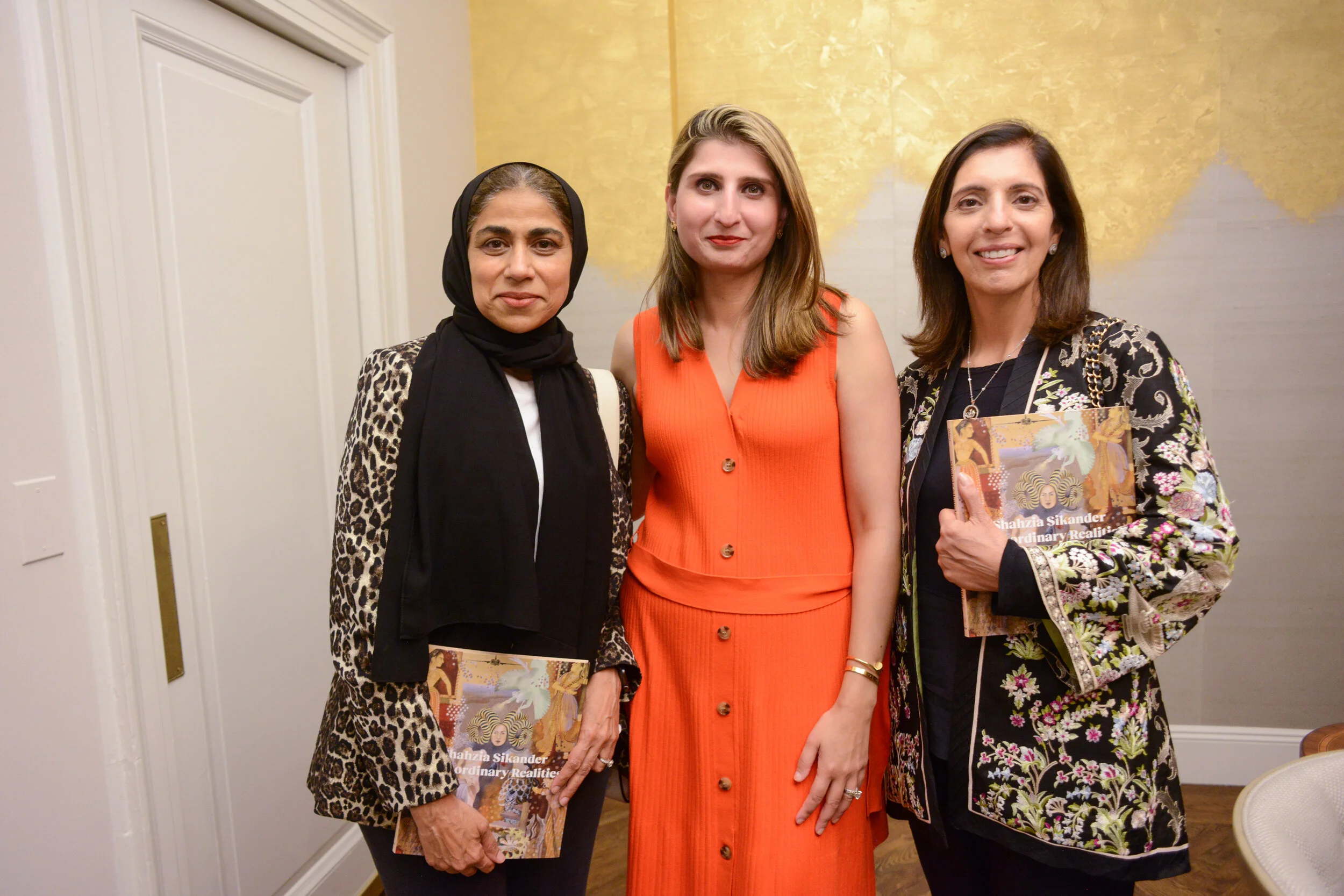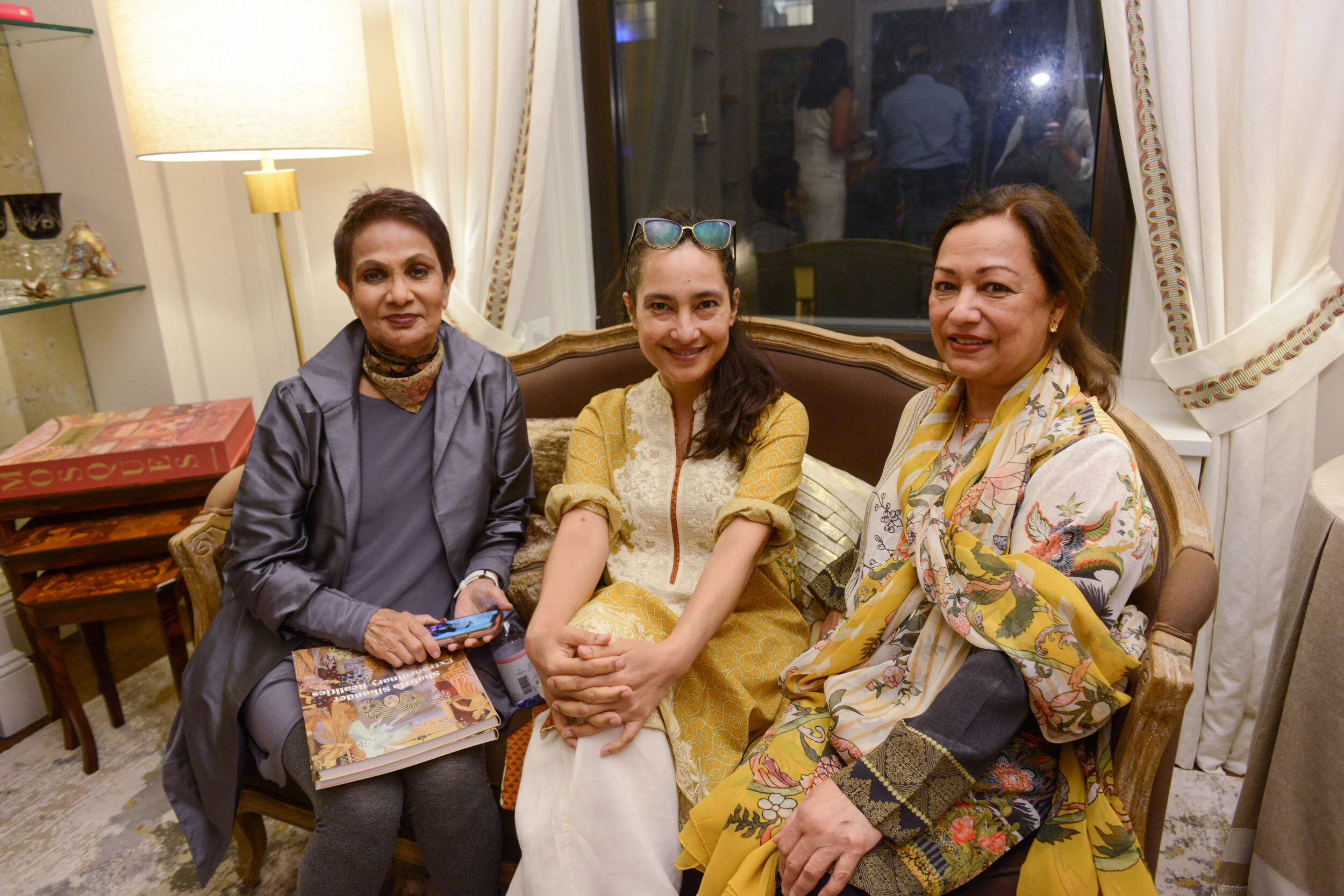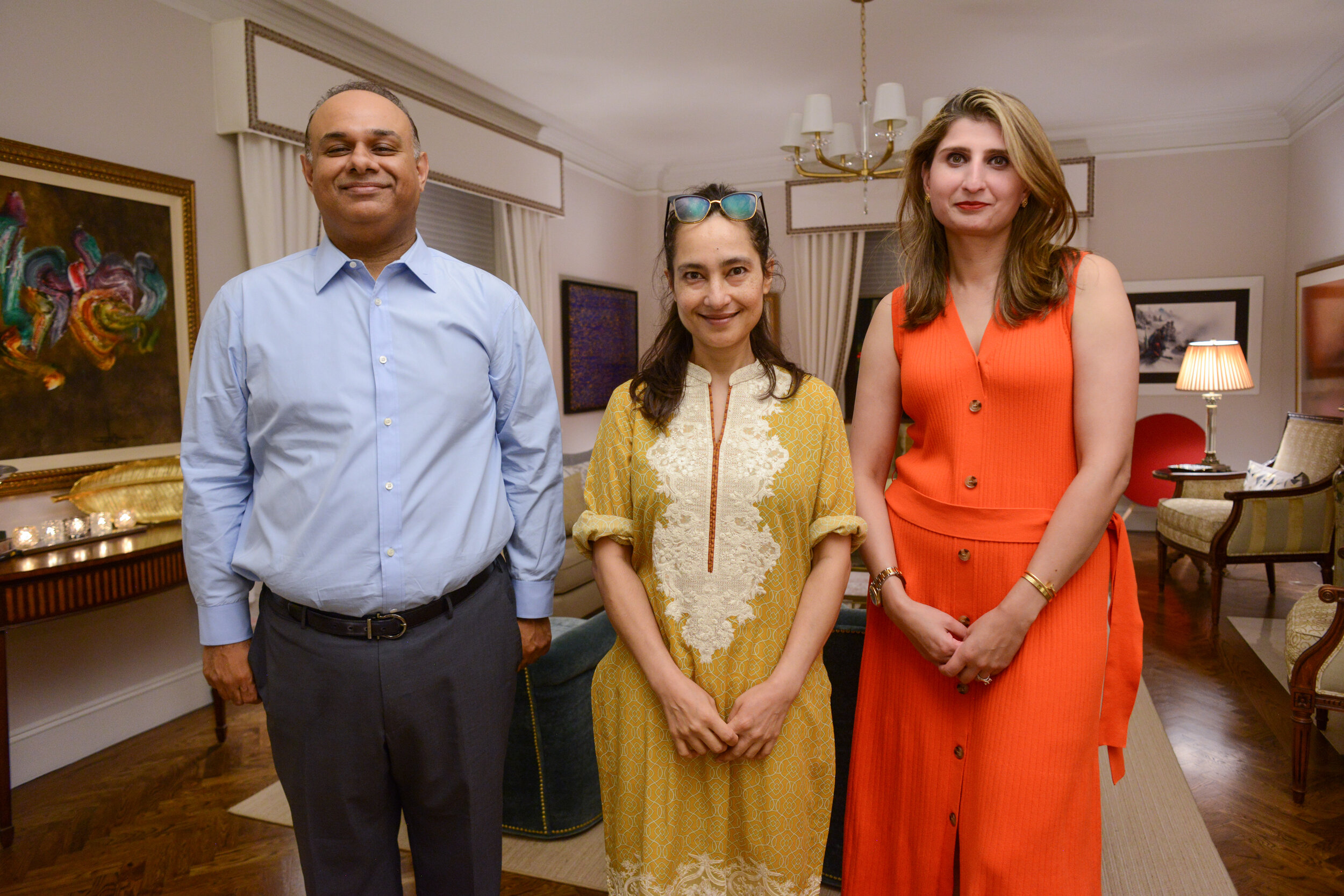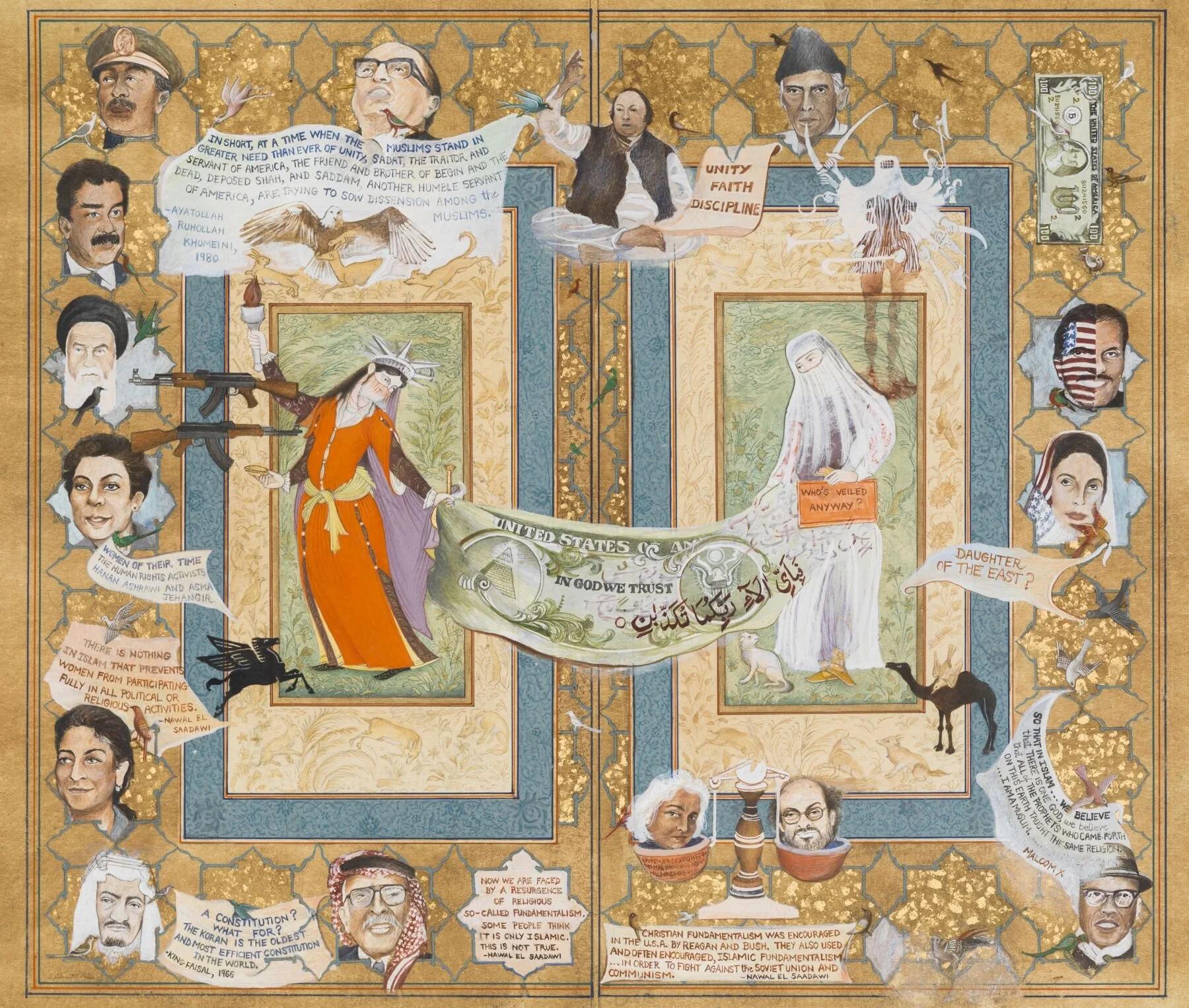The Extraordinary Realities of Shahzia Sikander
“Pleasure Pillars” 2001
The neo-miniaturist artist Shahzia Sikander has always explored contrast and juxtaposition, analyzing the difference and distinction of the spaces she has entered throughout the course of her impressive career.
Sikander’s distinct style and approach was in full force and on display from June - September this year at the Morgan Library & Museum in New York City, which hosted an exhibit of Sikander’s work titled Extraordinary Realities.
Sikander hosted a private viewing of the exhibit for members of the American Pakistan Foundation (APF) on September 12 during which members learned about her career, motivations for her work, and her personal journey from Pakistan to the United States.
“If the work can speak to Asian American-ness, fine, Muslim American-ness, fine, female artist, fine, artist, great — that is what I want to at least invoke in someone.”
Pakistan
Extraordinary Realities is an amalgamation of all of the worlds - past, present, and future - that Sikander entered, occupied, and explored during the first 15 years of her career. The exhibit begins in Pakistan, featuring a selection of work from her time as a student at the National College of Arts (NCA) in Lahore in the early 1990s. Sikander was influenced by her mentor Bashir Ahmad, an artist whom she studied alongside at NCA and who was devoted to preserving classical representations of the Mughal tradition of miniature painting. Miniature painting is rooted in the artistic traditions of European, Safavid, and Mughal empires that spread across Central and South Asia from the 16th to 19th centuries.
The Mughal miniaturist tradition greatly informs Sikander’s work. However, she pushes the boundaries of the discipline to connect technique with a message that explores cultural identities and racial narratives and their relationship with colonialism and its aftermath on the societies it impacts. Importantly, she prominently features women whose depictions are both haunting and haunted by the cultural and political forces that weigh heavy over them.
Rhode Island to the American South
During the 1990s, Sikander moved to the United States to attend school at the Rhode Island School of Design (RISD). She began experimenting with other artistic elements that were uncommon for miniature paintings. She started using decorative motifs that exceed the page’s borders. She incorporated animals and human faces that floated freely on the space. She painted drippings of white ink made to emulate veils or cages were pushed to the forefront of her artwork. It all deliberately provoked a new perspective in her evolving artistry.
After RISD, Sikander spent two years at the Glassell School of Art at the Museum of Fine Arts in Houston, Texas from 1995 to 1997. Her time in the American South left a significant imprint on Sikander’s existing views of colonialism. She saw American slavery as a consequence of the same British imperialism that impacted South Asia.
In Houston, Sikander met and worked closely with artist Rick Lowe & other local artists at Project Row Houses, which is “a community platform that enriches lives through art with an emphasis on cultural identity and its impact on the urban landscape” and that “engages neighbors, artists, and enterprises in collective creative action to help materialize sustainable opportunities in marginalized communities.” Sikander participated in a project that restored a group of small shotgun houses that became homes to marginalized communities, including single mothers completing their education. Soon, she began to incorporate aspects of African American history and experience into the themes of her work.
New York City
The 9/11 attacks in New York City dramatically impacted Sikander’s work. In pieces like “The Many Faces of Islam,” and others, she addressed themes of nationalism, Islamophobia, and tensions between Muslim countries and the United States. At the same time, she drew lines between the political and the personal, exploring how U.S. policies after 9/11 affected the daily lives and existences of Muslims all over the world. Indeed, her approach involves a mapping of the global to the intimate. This is a notion that Sikander herself elaborated on during a recent interview with PBS NewsHour in which she described herself as “somebody who’s interested, like a detective -- how to connect the dots, how to find where the material is, and to also examine [her] own relationship with it.”
“The Many Faces of Islam" (gouache, vegetable color, watercolor, and tea on wasli paper; 1997-1999)
Extraordinary Realities at the Morgan Library & Museum issues an urgent invitation to walk through the looking glass into a series of worlds that are disparate but one, multi-faceted yet linear. This above all, appears to be the artist’s goal in connecting her own life story and experiences to the technique and modes of expression in her art. In her own words, Sikander outlines her intentions so eloquently: “If the work can speak to Asian American-ness, fine, Muslim American-ness, fine, female artist, fine, artist, great -- that is what I want to at least invoke in someone”.
In Pictures
After the exhibit, APF hosted Sikander for a reception at the home of Kashmala and Zarrar Sehgal. We are grateful to the Sehgal family for their hospitality and generous support for the mission of APF. To ensure APF’s sustained focus on the arts and cultural heritage of Pakistani Americans, please make a donation to the APF Cultural Heritage Fund.
